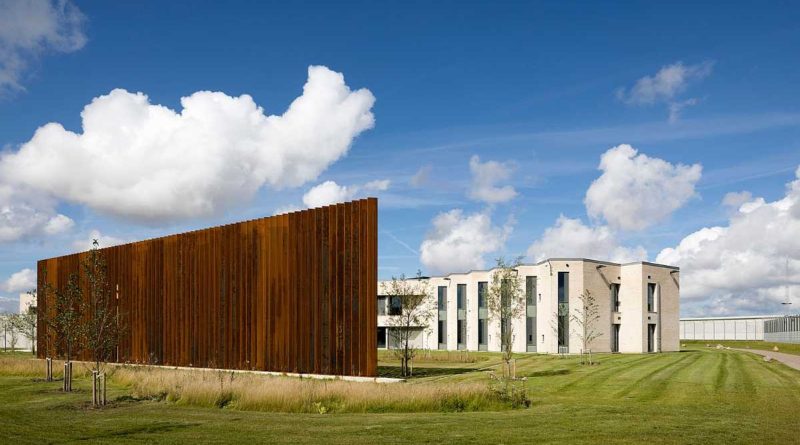Storstrøm Prison Welcomes the Future of Correctional Facility Design
GUNDSLEV, Denmark — There seems to be a theme when it comes to designing modern (and as often) experimental institutions — they sometimes looks like they belong in a science fiction movie. Basilia, the “planned city” and capital of Brazil designed by Oscar Niemeyer comes to mind. Ditto the Atomium building in Brussels, which is intended to suggest an “atom” but looks more like the beginning of an alien invasion.
When it comes to correctional institutions, however, the sci-fi arguably began to creep in with Jeremy Bentham’s concept of the panopticon. The name alone is futuristic sounding, which is amazing since its a 17th design. The basic idea is that inmates of an institution to be observed can be observed by a single guard without the inmates being able to tell whether or not they are actually being watched. Basically, it’s a tower surrounded by a donut of inward-facing cells and some pretty heavy-minded games to boot.
The new, distinctly utopian Storstrøm Prison in Gundslev, Denmark, is almost the exact opposite of Bentham’s Big Brother-ish benchmark. In fact, with its clean, rectilinear lines, light-colored bricks and a combination of concrete and galvanized steel, surrounded by rolling fields of green, the prison looks like it should be under a glass dome in some distant century.
Danish architectural firm C.F. Møller (named after its founder who launched the practice nearly a century ago) approached the premise of designing a prison with humaneness in mind. The idea was to create a 250-inmate facility that mirrored the scale of a “small provincial community,” explained its website. The result is possibly the “world’s most humane prison.”
As extolled on the firm’s site, “The cells are gathered in units comprising four to seven cells, placed around a social hub. The units have access to a living room area and a shared kitchen, where the inmates prepare their own meals. The living room areas are decorated in colours, which are less institutional, just as structurally integrated art and artworks created especially for the prison can be found throughout the prison.”
Moreover, a significant emphasis is put on natural daylight — the thinking being that the sun has inherent virtue for people’s wellbeing. To wit, light flows into each cell each cell from at least two windows. Inmates also have views of the sky and the surrounding rural landscape, which was designed by Marianne Levinsen Landskab ApS, also of Denmark.
Altogether, the idea is to foster an inmate’s desire to overcome troubled pasts and rejoin society, but with contemporary digs like Storstrøm Prison, they might be inclined to stay put — in the unfettered future of correctional design.

